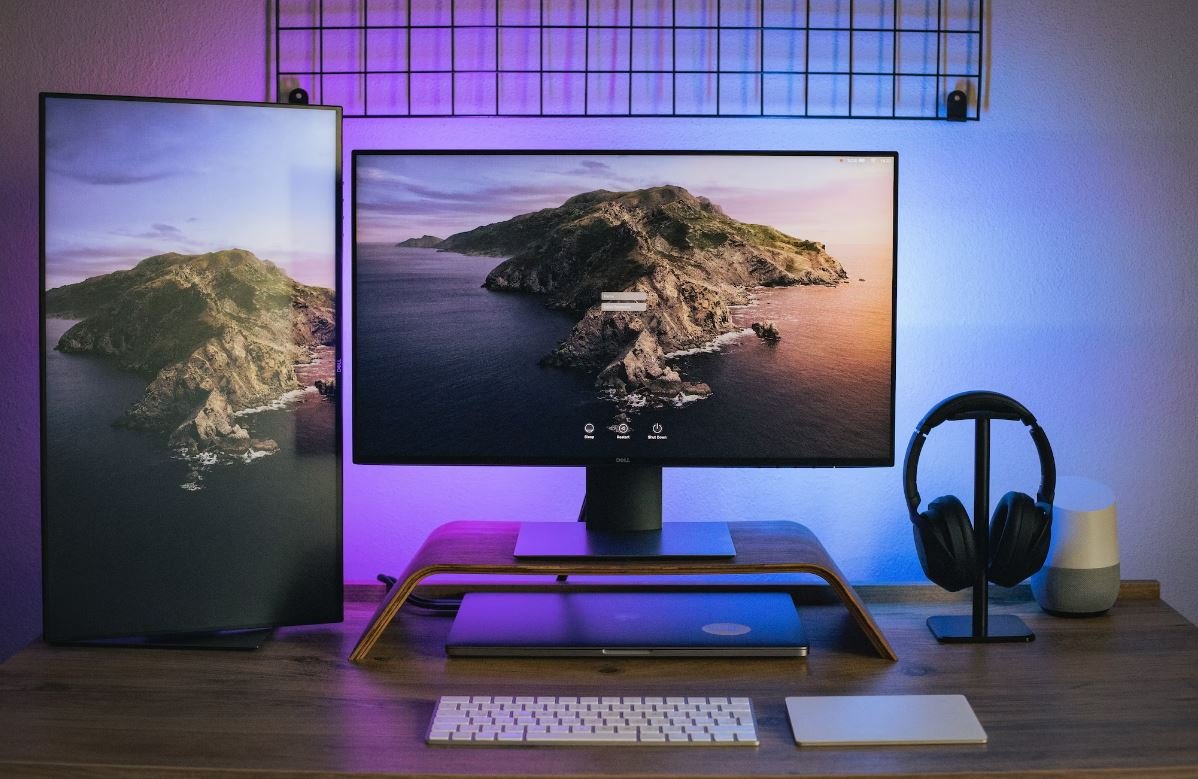Film Grip
A film grip is a crucial member of the film production crew responsible for managing and operating various equipment on set. They work closely with the cinematographer and other crew members to ensure that the camera movements and shots are executed smoothly and safely. Let’s dive deeper into the role and responsibilities of a film grip.
Key Takeaways
- Film grips are essential for camera support and movement.
- They operate various types of equipment, including dollies and cranes.
- Grips play a vital role in ensuring the safety of the crew and actors on set.
Role and Responsibilities
A film grip‘s primary role is to support the camera and create smooth camera movements. They are responsible for setting up and operating equipment such as dollies, cranes, tripods, and stabilizers. *Their expertise in rigging and securing the camera allows for creative and dynamic shots*. Additionally, grips collaborate with the cinematographer and gaffer to achieve the desired lighting and camera angles for each scene.
Supporting Equipment
Film grips handle and control a wide range of equipment to support the camera and create cinematic movements. Some of the common tools used by grips include:
- Dollies: Wheeled platforms on which the camera can be mounted to achieve smooth tracking shots.
- Cranes: Large mechanical arms that extend the reach of the camera, allowing for high or low angle shots.
- Jibs: Camera arms attached to cranes or tripods, providing vertical and horizontal movement.
- Stabilizers: Devices that minimize camera shake during handheld shots, resulting in smoother footage.
Importance of Safety
Ensuring the safety of the crew and actors on set is of utmost importance for film grips. They meticulously secure equipment to prevent accidents and injuries. Moreover, they collaborate closely with other departments, such as the art department and electrical department, to ensure that the set is safe and free from any potential hazards. *Their vigilance contributes to a productive and accident-free working environment*.
Table 1: Common Film Grip Equipment
| Equipment | Description |
|---|---|
| Dollies | Wheeled platforms for smooth tracking shots. |
| Cranes | Mechanical arms for high or low angle shots. |
| Jibs | Camera arms for vertical and horizontal movement. |
| Stabilizers | Devices to minimize camera shake during handheld shots. |
Working with the Cinematographer
Grips collaborate closely with the cinematographer to bring their creative vision to life. They assist in achieving specific lighting setups and camera angles. *Their understanding of camera movements and equipment allows them to efficiently translate the cinematographer’s ideas into practical setups*. This teamwork ensures that the intended visual style and storytelling come across on screen.
Table 2: Film Grip Roles and Responsibilities
| Responsibility | Description |
|---|---|
| Camera Support | Setting up and operating equipment for smooth camera movement. |
| Safety Precautions | Rigging and securing the camera to prevent accidents. |
| Collaboration | Working closely with the cinematographer to achieve creative goals. |
| Lighting Assistance | Assisting in achieving specific lighting setups. |
Conclusion
A film grip plays a critical role in the smooth operation of a film set. Their expertise in camera support, movement, and equipment operation contributes significantly to the visual storytelling and overall production quality. Grips work closely with the cinematographer and other crew members to create stunning visuals that captivate audiences.

Common Misconceptions
Misconception #1: Film Grips are responsible for directing the actors
One common misconception about film grips is that they are responsible for directing the actors in a film. However, their role is primarily focused on handling the equipment and providing technical support to the cinematographer. They assist with setting up cameras, lighting, and rigging, but they do not have any involvement in directing the actors’ performances.
- Film grips primarily handle equipment and provide technical support.
- They assist with camera setup, lighting, and rigging.
- Film grips do not direct the actors’ performances.
Misconception #2: Film Grips only work on big budget movies
Another misconception is that film grips only work on big budget movies. While it is true that larger productions usually have a team of film grips, they are also hired for smaller independent films, commercials, music videos, and television shows. Film grips are essential in any production that requires technical support and equipment handling, regardless of the budget.
- Film grips are hired for both big budget movies and smaller productions.
- They are essential in any production that requires technical support.
- Film grips work in a variety of media, including commercials, music videos, and TV shows.
Misconception #3: Film Grips are the same as gaffers
Many people confuse film grips with gaffers, assuming that they have the same responsibilities. While both roles are part of the lighting department, they have distinct tasks. Film grips are focused on the handling of equipment and rigging, while gaffers are responsible for the design and execution of the lighting setup. Both roles work closely together, but they have different areas of expertise.
- Film grips and gaffers are roles within the lighting department.
- Film grips focus on equipment handling and rigging.
- Gaffers are responsible for lighting design and execution.
Misconception #4: Film Grips only work on set
Many people believe that film grips only work on set during the production phase. However, their involvement extends beyond the set. Film grips are responsible for the transportation and setup of equipment at various shooting locations. They also assist during pre-production and can be involved in planning and organizing equipment needs for the production.
- Film grips handle equipment at various shooting locations.
- They are involved in pre-production and equipment planning.
- Film grips’ responsibilities extend beyond the set.
Misconception #5: Film Grips have no creative input
Some people assume that film grips have no creative input in the filmmaking process and that their role is purely technical. However, film grips often work closely with the cinematographer and the director to achieve the desired visual aesthetics. They contribute ideas and suggestions on camera movement, lighting setups, and rigging solutions to enhance the visual storytelling.
- Film grips collaborate with the cinematographer and director.
- They contribute creative ideas for camera movement and lighting setups.
- Film grips play a role in enhancing the visual storytelling.

Number of Film Grips in the Film Industry
Film gripping is an essential job in the film industry, responsible for setting up and maintaining all equipment needed for a successful shoot. Here’s a look at the number of film grips employed in different countries:
| Country | Number of Film Grips |
|---|---|
| United States | 2,500 |
| United Kingdom | 1,200 |
| Canada | 900 |
| Australia | 600 |
| Germany | 400 |
Film Grip Salary by Years of Experience
As film grips gain more experience, their salaries tend to increase. Here’s an overview of film grip salaries based on years of experience:
| Years of Experience | Salary Range (Annual) |
|---|---|
| 0-2 | $30,000 – $45,000 |
| 3-5 | $45,000 – $60,000 |
| 6-10 | $60,000 – $75,000 |
| 10+ | $75,000+ |
Most Common Equipment Used by Film Grips
Film grips rely on various tools and equipment to assist with their work on set. Here are the most commonly used items:
| Equipment | Percentage of Film Grips Using |
|---|---|
| Camera Dolly | 85% |
| C-Stands | 78% |
| Grip Gloves | 64% |
| Grip Tape | 52% |
| Monitors | 41% |
Highest Grossing Films with Outstanding Film Grip Work
Film grips contribute to the overall success of a film through their diligent work behind the scenes. Here are some of the highest grossing films that featured exceptional film grip work:
| Film | Box Office Revenue (in millions) |
|---|---|
| Avatar | $2,789 |
| Avengers: Endgame | $2,798 |
| Titanic | $2,187 |
| Star Wars: The Force Awakens | $2,068 |
| Jurassic World | $1,670 |
Gender Breakdown Among Film Grips
Gender diversity in the film industry is an important topic. Here’s a look at the gender breakdown among film grips:
| Gender | Percentage of Film Grips |
|---|---|
| Male | 70% |
| Female | 30% |
Top Film Grip Training Programs
To become a film grip, proper training is crucial. Here are some of the top film grip training programs worldwide:
| Training Program | Location |
|---|---|
| School of Grip: Film Grip Training | Los Angeles, USA |
| The Grip Academy | Vancouver, Canada |
| Grip Train | Sydney, Australia |
| The Grip Masterclass | London, UK |
| Die Greifschule (The Grip School) | Berlin, Germany |
Famous Film Grips Who Became Directors
Some film grips have made successful transitions to becoming directors. Here are a few individuals who started their careers as film grips:
| Name | Directed Films |
|---|---|
| Christopher Nolan | The Dark Knight Trilogy, Inception, Interstellar |
| Steven Soderbergh | Traffic, Ocean’s Eleven, Erin Brockovich |
| Barry Jenkins | Moonlight, If Beale Street Could Talk |
| David Fincher | Fight Club, The Social Network, Gone Girl |
| Spike Jonze | Being John Malkovich, Her, Adaptation |
Impact of Film Grips on Film Quality
A talented film grip team can significantly impact the quality of a production. Here are some aspects of a film that can be directly influenced by film grips:
| Aspect | Impact |
|---|---|
| Stability of Shots | Smooth, stable shots enhance the overall viewing experience. |
| Lighting Support | Grips assist in setting up lighting equipment for optimal visual effects. |
| Camera Movement | Effective use of dollies and cranes can create dynamic camera movements. |
| Rigging Challenges | Grips solve complex rigging problems to achieve the desired shots. |
| Set Safety | Grips ensure proper equipment setup to prevent accidents on set. |
International Experiences of Film Grips
Film grips often travel internationally to work on various productions around the globe. Here are some countries where film grips embrace international experiences:
| Country | Film Grip International Work Experience |
|---|---|
| United States | 65% of film grips have worked on international projects. |
| Australia | 44% of film grips have gained international work experience. |
| Canada | 37% of film grips have worked on international projects. |
| United Kingdom | 28% of film grips have gained international work experience. |
| Germany | 16% of film grips have worked on international projects. |
Overall, film grips play a crucial role in the film industry, ensuring the smooth operation of sets and contributing to the visual and technical aspects of a film. From setting up equipment to maintaining stability, their expertise enhances the overall quality and success of productions.
Frequently Asked Questions
What does a film grip do?
A film grip is responsible for setting up and operating equipment such as dollies, cranes, and camera rigs to achieve fluid camera movements and steady shots in film production.
What kind of equipment does a film grip handle?
Film grips handle a wide range of equipment including camera dollies, cranes, jibs, sliders, tracks, rigging equipment, stabilizers, and various mounts.
What skills are required to be a film grip?
Film grips need to have a thorough understanding of camera equipment, knowledge of different grips and techniques, physical strength to handle heavy equipment, problem-solving skills, and good communication abilities to work effectively with the camera crew.
What is the role of a film grip in a film production team?
The film grip works closely with the camera department and the director of photography to execute the desired camera movements and set up shots safely and efficiently. They are responsible for the technical aspects of camera movement and contribute to the overall visual aesthetic of the film.
How does a film grip contribute to the lighting setup?
Film grips often collaborate with the lighting department to rig lighting equipment and create specific lighting setups. They assist in positioning lights, setting up reflectors, and attaching lighting fixtures to achieve the desired lighting effects.
Is physical strength important for a film grip?
Yes, physical strength is important for a film grip as they need to maneuver heavy camera equipment, assemble rigs, and perform physically demanding tasks while ensuring the safety of the crew and equipment.
Do film grips work on both indoor and outdoor shoots?
Yes, film grips work on both indoor and outdoor shoots. They adapt to different shooting conditions and collaborate with other crew members to ensure proper setup, support, and movement of the camera equipment.
What safety precautions do film grips follow?
Film grips follow strict safety protocols to ensure the wellbeing of the crew and equipment. This includes securing heavy equipment, using safety harnesses, maintaining clear communication during movements, and regularly inspecting the rigging and equipment for any potential issues.
Can film grips specialize in specific techniques or equipment?
Yes, film grips can specialize in specific techniques or equipment such as working with cranes or aerial rigs. Specialized film grips bring expertise in their specific area and can contribute to unique camera movements and setups.
How can one pursue a career as a film grip?
To pursue a career as a film grip, one can start by gaining practical experience on film sets, assisting experienced grips, and familiarizing themselves with camera equipment and techniques. Taking relevant courses or pursuing a degree in film production can also be beneficial.




